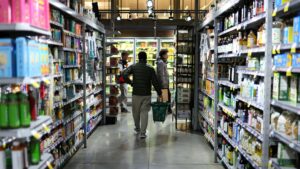Understanding the Rising Costs: A Deep Dive into Tariffs and Inflation
In the ever-evolving landscape of the economy, one pressing concern for consumers today is the impact of tariffs on prices. As we navigate through 2025, the rising costs due to these tariffs are becoming increasingly evident. Insights from industry leaders shed light on the challenges consumers face and the strategies businesses are implementing to weather the storm.
The Cost is Coming: An Economic Forecast
Recent findings from an EY-Parthenon survey involving 4,000 executives reveal a troubling trend: nearly half expressed readiness to pass on roughly two-thirds of the costs associated with tariffs to their customers. Alarmingly, over 30% indicated they would shift more than 90% of these expenses onto consumers. This signals a significant escalation in sticker prices across various sectors, a reality that shoppers will soon confront.
With President Trump’s 25% tariffs on goods imported from Canada and Mexico, coupled with an additional 10% duty on Chinese imports, it’s a perfect storm brewing for price increases. Target’s CEO, Brian Cornell, has already warned consumers to prepare for higher prices on produce. As your trusted source of economic insights, the Extreme Investor Network aims to keep you informed of these developments so that you can make timely and well-informed decisions.
The Trade War’s Unforeseen Acceleration
The pace of the current trade war under the second Trump administration has taken many by surprise, moving "much faster than previously expected," according to Gregory Daco, chief economist at EY. He suggests that if such tariffs remain in place for an extended period, they could reduce U.S. GDP by 0.6%. Importantly, this estimate is contingent on the assumption of 20% duties on China and 3% tariffs on the rest of the globe.
As businesses grapple with these new realities, many are proactively adapting to stabilize their operations. Daco points out that companies today are focused on building resilience, often leading to increased inventories and exploring alternative supply chains. This preemptive action, while necessary, is not without its own costs and can contribute to inflationary pressures.
Navigating Consumer Impact: What Lies Ahead?
So, what does this mean for consumers? While some industries, such as auto manufacturing, construction, and steel, currently hold inventory that may cushion the immediate blow on prices, the effects of tariffs will inevitably reach consumers. As Daco aptly puts it, "Consumers are not going to see, necessarily, the full impact overnight–but they will rapidly observe the rise in costs for cars, refrigerators, and construction materials."
Even if the administration decides to lift tariffs in the near future, the stickiness of price levels suggests that consumers could continue to feel the squeeze long after the tariffs are gone. Daco cautions, “Just because tariffs could be pulled back does not mean that there’s no negative.”
Prepare to Adapt
At Extreme Investor Network, we emphasize the importance of staying informed in such dynamic economic conditions. The reality is clear: uncertainty deters economic activity, and the adjustments businesses must make to navigate these tariffs will impact consumers in significant, ongoing ways.
As a consumer, it’s more crucial than ever to prepare for rising prices and consider how these economic shifts might alter your purchasing decisions. Look to diversify your investment and spending habits, perhaps by assessing alternative brands or suppliers that might not be as heavily impacted by tariffs.
In conclusion, as we observe the evolving economic landscape shaped by these tariffs, being proactive and informed can equip you to make sound decisions that mitigate the impact of rising costs. Stay tuned to Extreme Investor Network for more expert insights and resources to thrive in this challenging economic environment.

